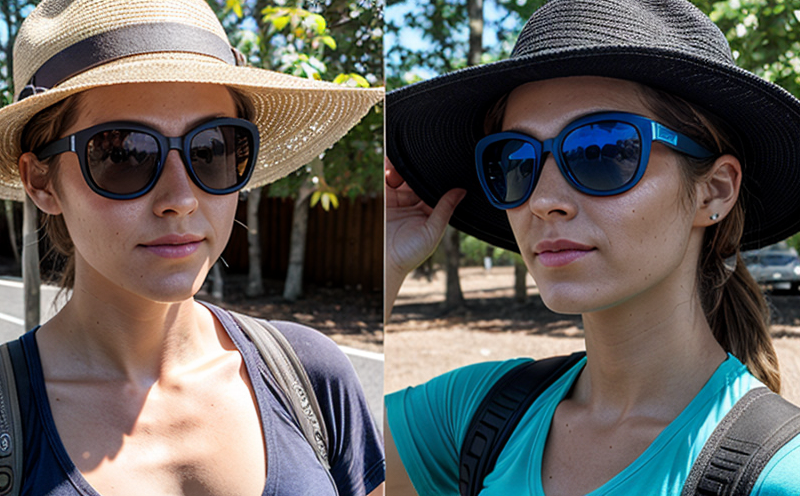UV resistance of fashion fabrics used in summer clothing
The UV resistance of fashion fabrics is a critical factor to consider when designing and manufacturing summer clothing. This attribute ensures that the textiles remain functional, aesthetically pleasing, and safe for consumers over extended periods. The ability to withstand ultraviolet radiation without significant degradation is essential for maintaining fabric integrity and consumer comfort.
Summer clothing made from fabrics with poor UV resistance can fade rapidly and lose their color, leading to a diminished aesthetic appeal. Additionally, prolonged exposure to sunlight can cause the fibers of these textiles to weaken, resulting in reduced durability and increased risk of tearing or breaking down. Such issues may not only compromise the fabric's performance but also lead to safety hazards for users.
Understanding how UV radiation interacts with different types of fabrics is crucial for ensuring that summer clothing meets both aesthetic and functional expectations. The standard methods for testing UV resistance typically involve exposing textile samples to controlled levels of ultraviolet light over specified durations. These tests help determine the stability of a fabric’s properties under real-world conditions, allowing manufacturers to make informed decisions regarding material selection.
One of the most common standards used in this context is ISO 17650-3:2018, which provides guidelines for evaluating the resistance of fabrics and other materials against natural sunlight. This standard specifies procedures for exposing samples to artificial solar radiation using a xenon arc lamp or other suitable devices. By adhering to these internationally recognized protocols, laboratories can provide accurate assessments of UV resistance, helping brands ensure product quality.
Another important aspect of fabric testing is the measurement of light transmission through different layers of clothing. This parameter is particularly relevant in assessing how effectively a garment protects against harmful UV rays while still allowing for some degree of visible light penetration. Light transmission tests involve measuring the amount of incident and transmitted light at various angles, providing insights into both aesthetic and protective qualities.
For quality managers responsible for overseeing product development processes, understanding these testing parameters is vital in ensuring compliance with industry standards and customer expectations. Compliance officers must also ensure that all products meet regulatory requirements related to UV protection. Engineers involved in R&D can leverage detailed reports from these tests to refine future designs by selecting more durable and resilient materials.
Moreover, procurement teams play a key role in sourcing fabrics that demonstrate strong UV resistance properties. By specifying precise criteria during tender invitations or direct negotiations with suppliers, they contribute significantly towards maintaining consistent product quality across all stages of production.
- ISO 17650-3:2018 – Provides guidelines for evaluating the resistance of fabrics and other materials against natural sunlight.
- Xenon arc lamp – Used in artificial solar radiation exposure tests per ISO standards.
- Light transmission measurement – Measures incident and transmitted light through different layers of clothing, assessing both protective and aesthetic qualities.
In conclusion, testing the UV resistance of fashion fabrics used in summer clothing is an essential process that ensures product quality, durability, and safety. By following established international standards such as ISO 17650-3:2018, manufacturers can produce garments that not only meet customer demands but also comply with relevant regulations.
Benefits
Testing the UV resistance of fashion fabrics offers numerous benefits for textile producers and end-users alike. For manufacturers, it ensures that their products are durable and long-lasting, reducing maintenance costs associated with frequent replacement due to premature aging or damage caused by prolonged exposure to sunlight.
- Enhanced durability: Fabrics treated to withstand UV radiation maintain their strength and integrity over time, leading to longer product life cycles.
- Better aesthetic appeal: By preventing color fading and maintaining vibrant hues, these tests help preserve the visual attractiveness of summer clothing items.
- Improved safety performance: Stronger fabrics contribute to enhanced protection against potential injuries from weakened materials during wear or use.
For consumers purchasing such garments, the advantages extend beyond mere aesthetics. They enjoy peace of mind knowing that their clothes will retain their quality and functionality even after extended periods outdoors. Furthermore, this testing contributes positively towards environmental sustainability efforts by promoting resource-efficient practices within industries.
In summary, investing in thorough UV resistance tests provides significant value across multiple dimensions—quality assurance, cost savings, customer satisfaction, and eco-friendly production methods—all contributing to overall business success and consumer trust.
International Acceptance and Recognition
The ISO 17650-3 standard has gained widespread acceptance worldwide due to its rigorous methodology and consistent results across diverse environments. Many countries have adopted this protocol as part of their national standards or regulatory frameworks for textile products.
- United States (ASTM D1482)
- European Union (EN ISO 17650-3)
- China (GB/T 19916.1)
The harmonization of these standards ensures uniformity in testing procedures, facilitating seamless trade between nations and industries. Laboratories accredited to perform these tests are recognized globally, making them trusted sources for accurate assessments.
Adherence to international standards not only enhances credibility but also promotes fair competition among manufacturers by leveling the playing field through consistent quality measurements.
Competitive Advantage and Market Impact
In today’s competitive market, demonstrating superior UV resistance in summer clothing can be a significant advantage for brands. Consumers increasingly prioritize product longevity and environmental responsibility when making purchasing decisions. By investing in robust UV resistance testing, manufacturers demonstrate their commitment to delivering high-quality products that stand the test of time.
Achieving certification against recognized international standards signals to both consumers and industry peers that your company adheres to strict quality control practices. This can enhance brand reputation and foster customer loyalty, ultimately driving sales growth.
Moreover, companies that excel in UV resistance testing are better positioned to navigate evolving regulatory landscapes. As environmental concerns become more pronounced, having reliable data on material performance helps anticipate future requirements and stay ahead of competitors.
In conclusion, prioritizing UV resistance testing is not just about meeting basic expectations; it’s an investment in long-term success that resonates with modern consumers who value sustainability and durability above all else.





